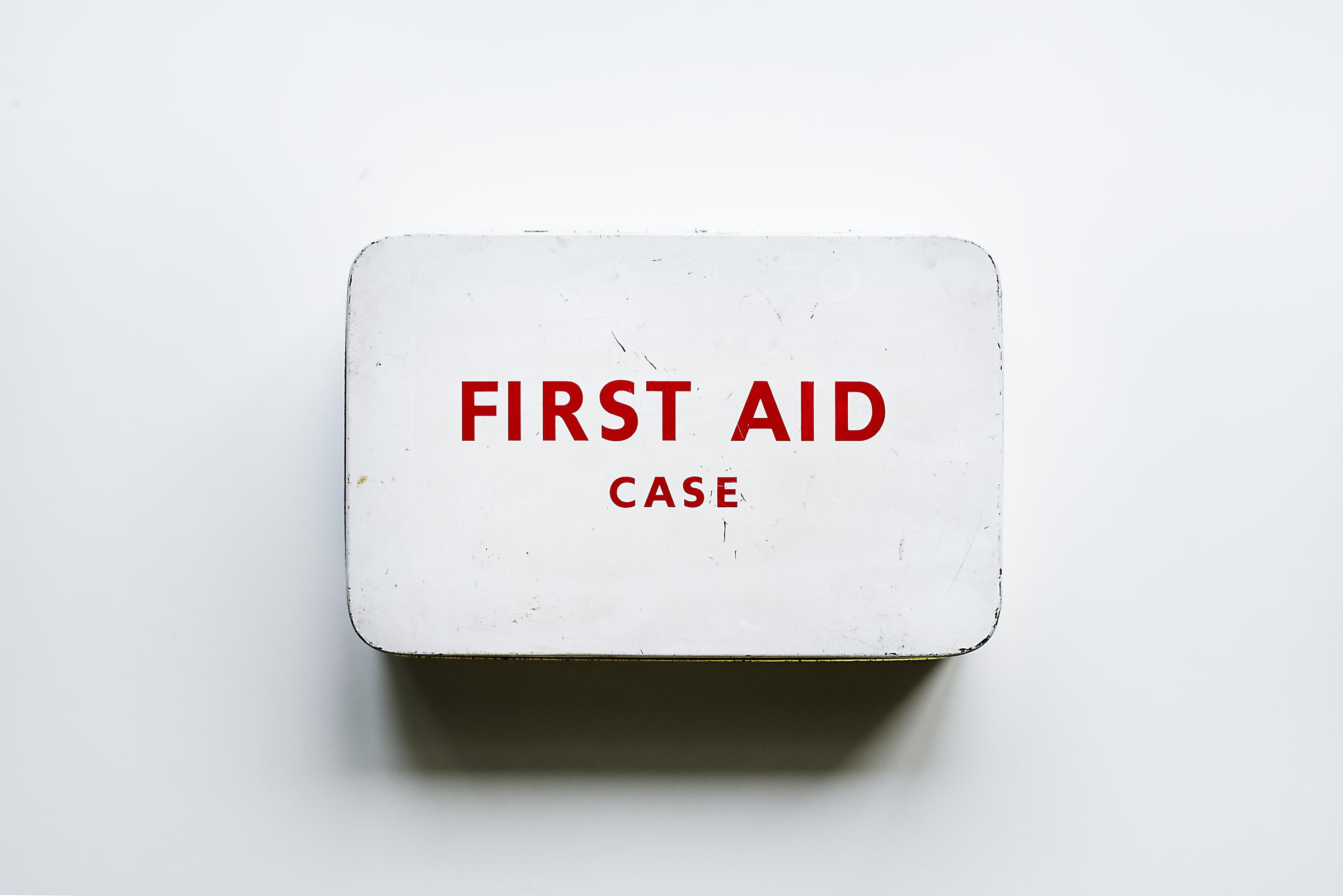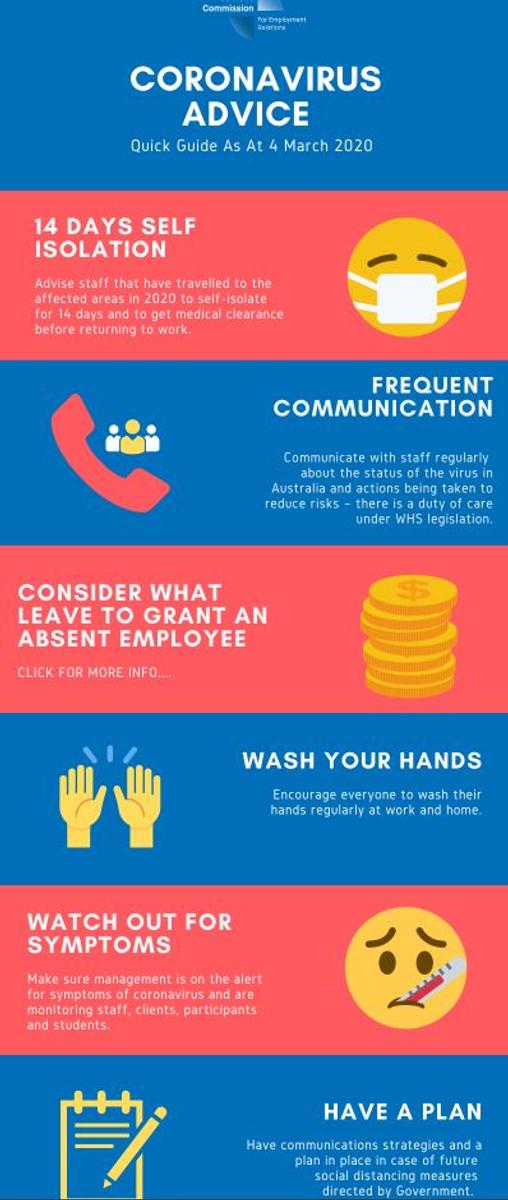Health & Safety

Medication
If your child needs to take medication during school hours eg. antibiotics or antihistamines, a Medical Permission Form is required to be completed and handed into the front office along with the medication.
Please see Mrs Pittman in the Office.
CORONAVIRUS UPDATE
As you would be well aware, the Coronavirus is still a very prominent topic in the media and we continue to receive updates from Catholic Schools NSW.
NSW Health has information available on its website.
Factsheet: https://www.health.nsw.gov.au/Infectious/alerts/Pages/coronavirus.aspx
FAQs: https://www.health.nsw.gov.au/Infectious/alerts/Pages/coronavirus-faqs.aspx
INFLUENZA
If your child is unwell or presented with the following symptoms please keep them at home until they have seen a doctor and started treatment. Symptoms include: Fever or feeling feverish/chills, cough, sore throat, runny nose, muscle or body aches, headaches, fatigue (tiredness). Some people may have vomiting and diarrhea (most common in children). To avoid passing it on to others children are encouraged to cover their mouth and nose when coughing or sneezing and wash their hands regularly. For more information please go to www.healthdirect.gov.au/influenza-a-flu
IMPETIGO—SCHOOL SORES
If your child is unwell or presents with inflamed blisters that pop, weep and form crusts, please keep them at home until they have seen a doctor and started treatment. To avoid passing it on to others children are encouraged to wash their hands regularly. Impetigo is highly contagious. For more information please go to www.healthdirect.gov.au/impetigo
Healthdirect -Free Australian health advice.
School exclusion periods
If your child has an infectious condition, you may need to keep them at home from day care or school to stop it from spreading. Here’s a list of common childhood illnesses and their recommended exclusion periods.
If you would like to learn more about any of these conditions, go to
https://www.healthdirect.gov.au/school-exclusion-periods.
| Chickenpox | |
| Common symptoms and how it's spread | Chickenpox causes mild fever and a rash of red, itchy patches. These turn into fluid-filled blisters before they crust over to form scabs and eventually drop off. Chickenpox spreads through close person-to-person contact and droplets in the air (from sneezing and coughing, for example). |
| Is a vaccine available? | Yes |
| Should I keep my child home from school? | Yes, until all blisters have dried, which is usually around 5 days after the rash first appeared. |
| Colds | |
| Common symptoms and how it's spread | Common symptoms of a cold include coughing, low-grade fever, a sore throat, sneezing and a blocked or runny nose. Colds are spread through droplets in the air – from coughs or sneezes, for example – and on surfaces. |
| Is a vaccine available? | No |
| Should I keep my child home from school? | No, there is no need to exclude a child with the common cold if they seem well. |
| Conjunctivitis | |
| Common symptoms and how it's spread | Conjunctivitis, or 'pink eye', causes redness and swelling of the outer layer of the eye and inside the eyelid. It can also cause sore and watery eyes, with pus. Conjunctivitis spreads through contact with the discharge from an infected eye, nose or throat. |
| Is a vaccine available? | No |
| Should I keep my child home from school? | Yes, until the discharge (pus) from their eyes has stopped — unless otherwise advised by your doctor. |
| Diarrhoea | |
| Common symptoms and how it's spread | Diarrhoea is loose, watery stools occurring more than 3 times in 1 day. It can be caused by a virus, bacteria, parasite, food poisoning, allergy, or other conditions. Stomach cramps, nausea, a fever, headache and loss of appetite are common associated symptoms. |
| Is a vaccine available? | No |
| Should I keep my child home from school? | Yes, until they have not had a loose bowel motion or other symptoms for 24 hours and if there is no cause identified. They may need to stay home for 48 hours until the cause has been identified. |
| Gastroenteritis | |
| Common symptoms and how it's spread | Gastroenteritis, also known as ‘gastro’, can cause vomiting and diarrhoea, as well as nausea and stomach pains. It spreads easily from having contact with an infected person (or their vomit or stools). It can also spread via contaminated food or water. |
| Is a vaccine available? | No |
| Should I keep my child home from school? | Yes, until they have not had a loose bowel motion or other symptoms for 24 hours and if there is no cause identified. They may need to stay home for 48 hours until the cause has been identified. |
| Hand, foot and mouth disease | |
| Common symptoms and how it's spread | The main symptoms of hand, foot and mouth disease are fever and tiny blisters on the cheeks and gums, inside the mouth and on the hands and feet. Children pass it on easily by touching other kids, or toys that other children will play with. |
| Is a vaccine available? | No |
| Should I keep my child home from school? | Yes, until all blisters have dried. |
| Head lice | |
| Common symptoms and how it's spread | Head lice are tiny insects about the size of a sesame seed that live in the hair of humans. They bite and cause itching of the skin. Lice can be passed between people by close head-to-head contact and sharing personal items, such as combs. |
| Is a vaccine available? | No |
| Should I keep my child home from school? | No, as long as effective treatment begins before the next school day. |
| Influenza (flu) | |
| Common symptoms and how it's spread | Influenza, or 'the flu', commonly causes symptoms such as high fever, dry cough, muscle ache and fatigue. Less common symptoms include sore throat and a runny nose. Children may also have abdominal pain, nausea and vomiting. It spreads from person to person through droplets in the air. |
| Is a vaccine available? | Yes |
| Should I keep my child home from school? | Yes, until they are well. |
| Measles | |
| Common symptoms and how it's spread | Early symptoms of measles include fever, cough, feeling tired, sore throat, runny nose, discomfort when looking at light and sore, watery eyes. A rash appears after 3 to 4 days. The spots (or blotches) are red and slightly raised. Measles spreads through droplets in the air. |
| Is a vaccine available? | Yes |
| Should I keep my child home from school? | Yes, from the onset of symptoms to 4 days after the rash appears. |
| Mumps | |
| Common symptoms and how it's spread | Mumps is recognisable by the painful swellings on the side of the face under the ears. Other symptoms include headache, joint pain and a high temperature. It's spread by close contact or by coughing and sneezing. |
| Is a vaccine available? | Yes |
| Should I keep my child home from school? | Yes, for 9 days or until the swelling goes down (whichever is sooner). |
| Rubella | |
| Common symptoms and how it's spread | Symptoms of rubella, or 'German measles', include a distinctive red-pink skin rash, swollen glands (nodes), and cold-like symptoms such as a mild fever, sore head and runny nose. Rubella is spread through personal contact, or by coughing and sneezing. |
| Is a vaccine available? | Yes |
| Should I keep my child home from school? | Yes, until they have recovered fully, or for at least 4 days after the rash first appeared. |
| Scabies | |
| Common symptoms and how it's spread | Scabies is an infestation of mites (tiny insects) that burrow under the skin causing intense itching and sometimes a rash. Scabies is passed from person to person through close skin contact or the sharing of clothing, towels and bedding. It's not caused by poor personal hygiene. |
| Is a vaccine available? | No |
| Should I keep my child home from school? | Yes, until the day after they start appropriate treatment. |
| Threadworms | |
| Common symptoms and how it's spread | Threadworms, or 'pinworms', look like 1cm-long pieces of white thread. The main symptom is itching in the anal area or around the vagina. Kids are often infected by getting threadworm eggs on their hands and then putting their hands in their mouth. |
| Is a vaccine available? | No |
| Should I keep my child home from school? | No, exclusion is not necessary. |
| Whooping cough (pertussis) | |
| Common symptoms and how it's spread | Whooping cough, or 'pertussis', usually begins with a persistent dry cough that progres |

